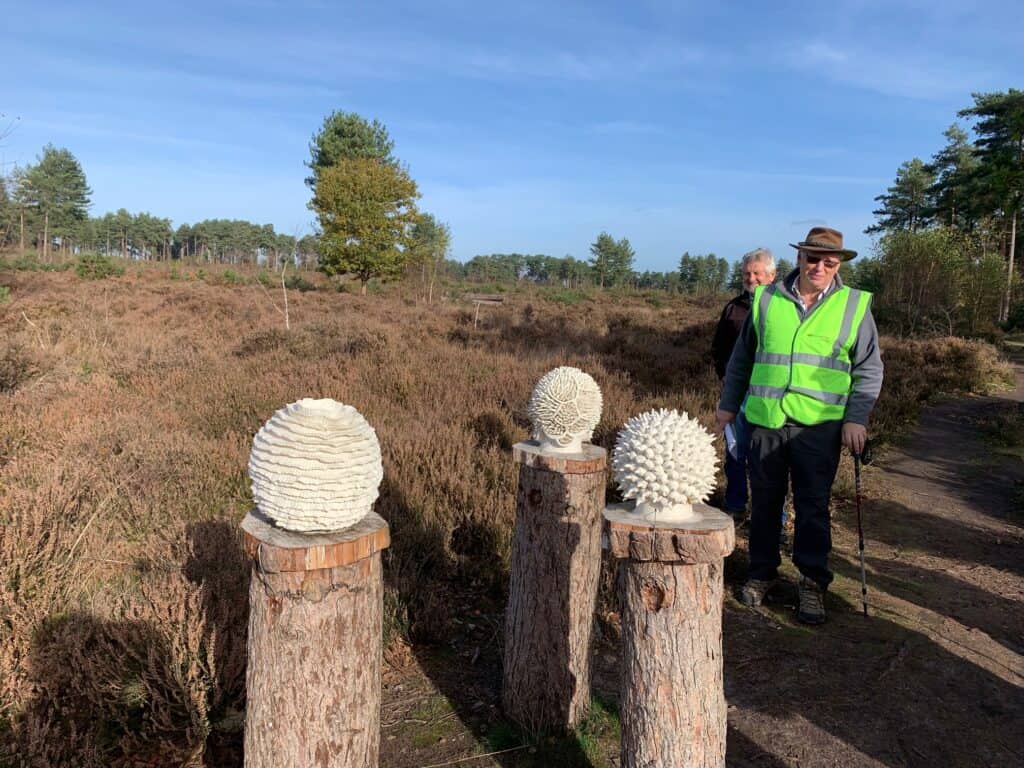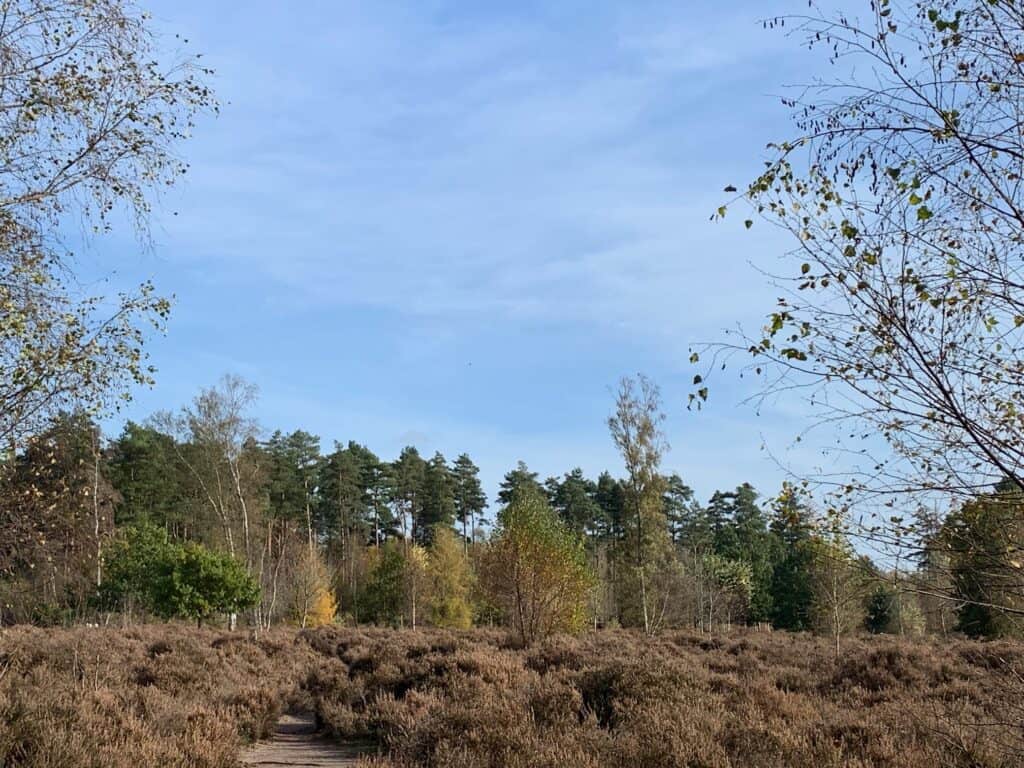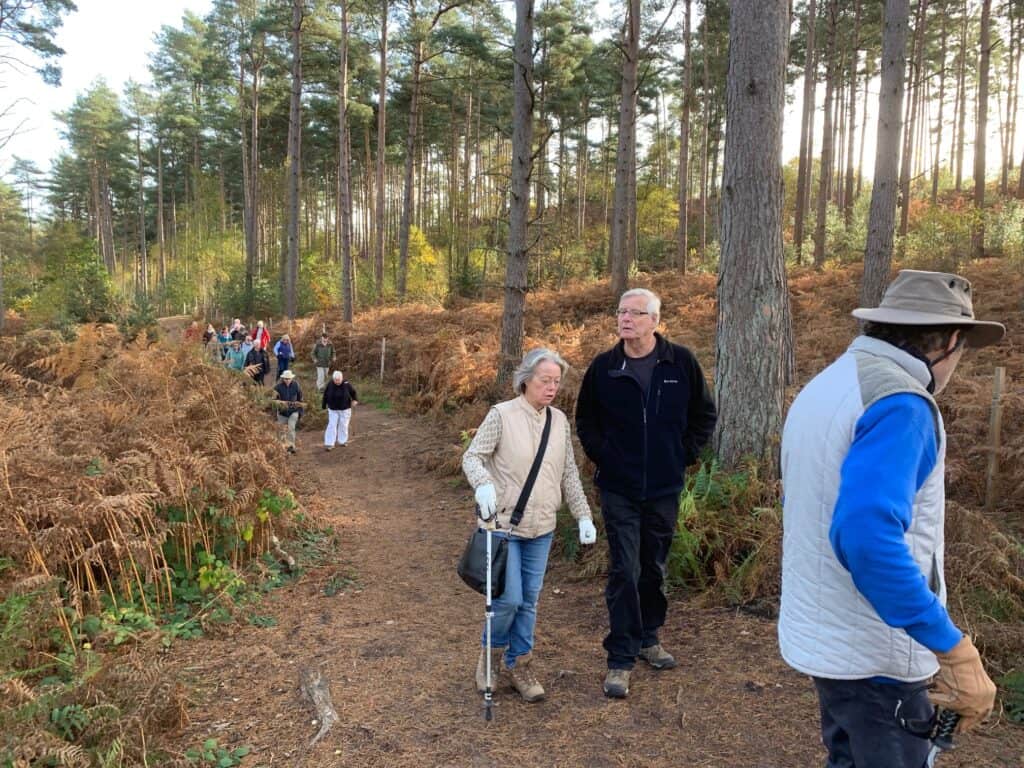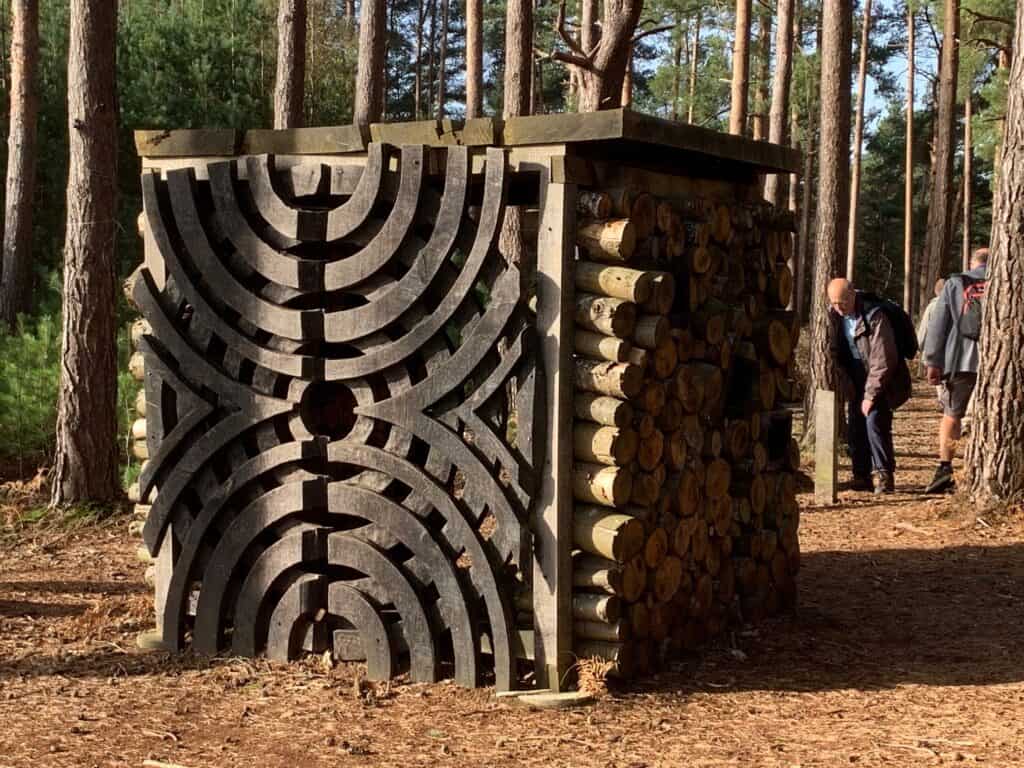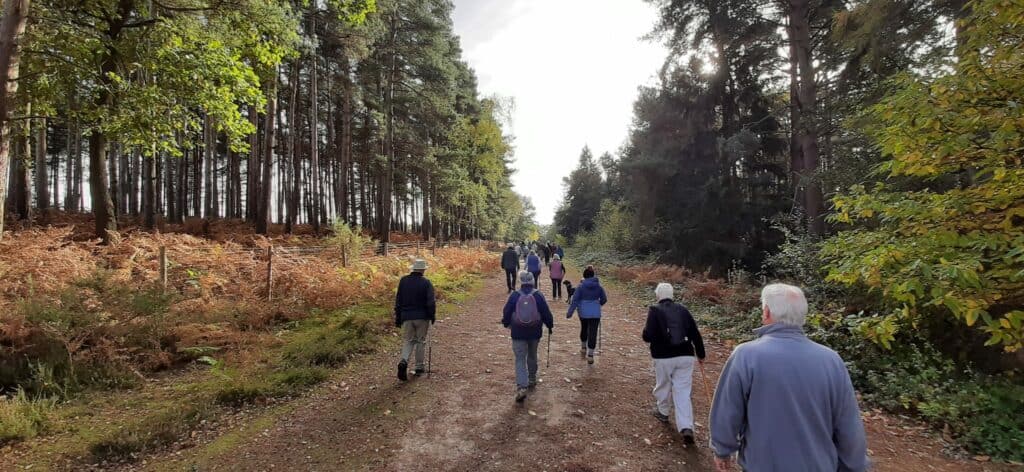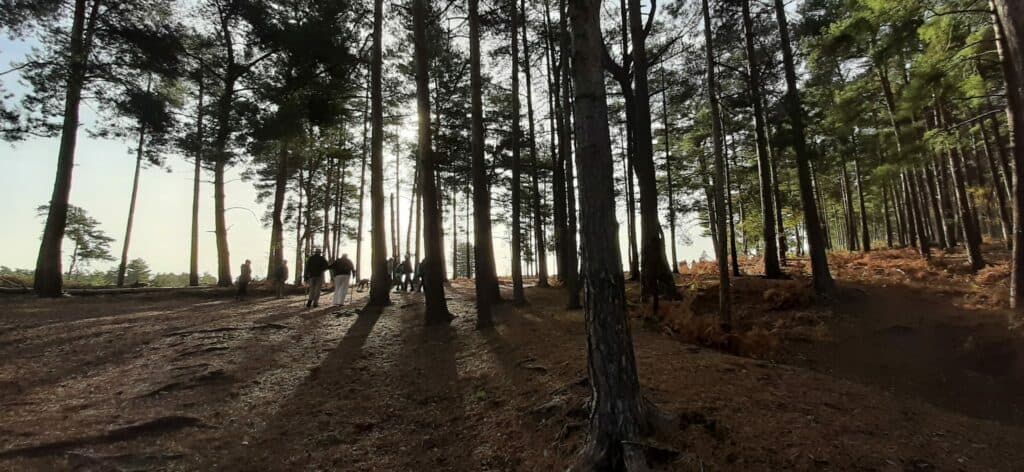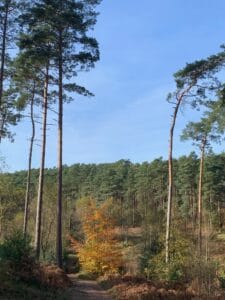Many of us will almost certainly have over-indulged during the festive season and taken less exercise than usual. However, a good number of us will also be making resolutions to get fit in the New Year. Instead of hitting the gym or joining an exercise class in the village hall, however, why not get out and get active?
The benefits of the great outdoors include reducing blood pressure, keeping our lungs, heart and bones healthy and improving our mental health and wellbeing.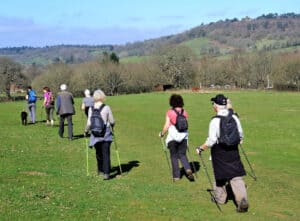
Perhaps we need an extra challenge rather than simply going for another walk. While most of us enjoy a good walk (members of the SHS probably more than most) what about trying out a different type of walking? Nordic walking, with poles, is brilliant exercise, working the upper body and giving a more complete workout. No wonder it is becoming increasingly popular with plenty of local walking groups.
Or perhaps explore a different area close to home. I live just outside of Dorking by Box Hill and most of my dog walks are around local fields, but I recently discovered lovely countryside walks just the other side of Dorking around Westcott. Or why not discover Surrey’s lesser-known villages? Betchworth, Godstone, Shere and Chiddingfold get more than enough visitors, so try exploring villages away from the tourist trail. Perhaps Holmbury St Mary, where EM Forster’s “A Room with a View” is supposedly based, or Outwood, with its grade 1 post mill, picturesque Bramley, or Seale with its hidden gem, the Manor Farm Craft Centre, housed in old farm buildings.
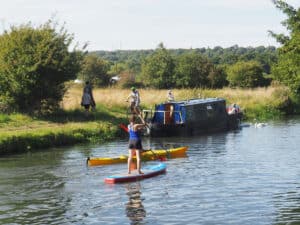
What else apart from walking? The Surrey Hills may be landlocked, but there are many opportunities to get close to water. Willing to give wild swimming a go? Try Divers Cove in Godstone, a former sand extraction site, or Buckland Lake, a 50-acre recreational lake near Reigate. Canoeing and paddleboarding are great fun and help to tone the upper body as well as offering a great opportunity to get close to wildlife.

Cycling is a great family activity and there are plenty of interesting cycle trails that do not involve the Box Hill loop. Check out the Cycling page of the AONB website for ideas. If cycling seems too strenuous e-cycling offers low-impact exercise along with an opportunity to enjoy the countryside at a comfortable pace. It’s possible to hire by the day or as a starting point just by the hour.
Volunteering is another way to stay active and contribute to conserving and protecting our countryside. Opportunities exist with many local organisations especially those concerned with environmental and wilding initiatives.
And for those who prefer to stay home, there is plenty to do in the garden even in January. Gardening benefits our well-being and gives a full body workout particularly when raking, digging or even clearing leaves. Finally for days when the weather really is too inclement to venture out, a spring-clean is not only good for your home but can boost your mood, burn calories and do wonders for your overall health.
Susie Turner




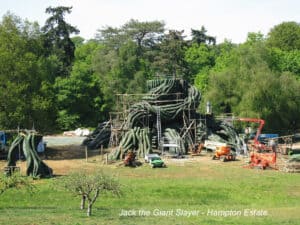


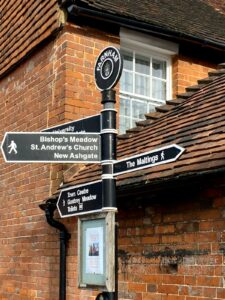

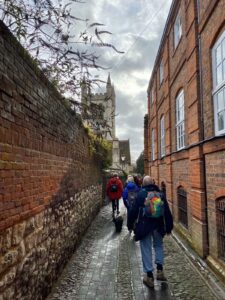
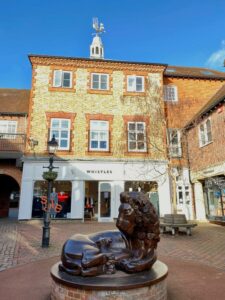
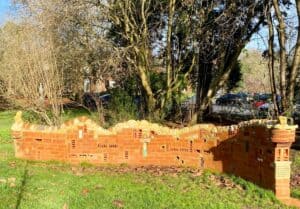
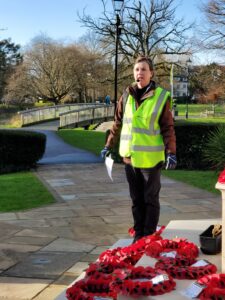

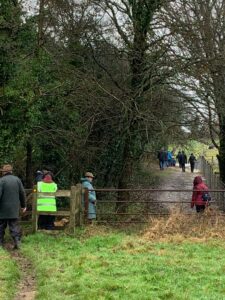




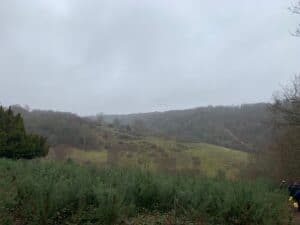
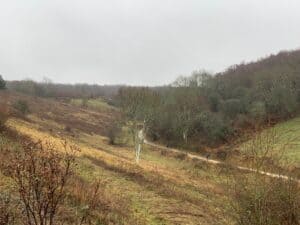
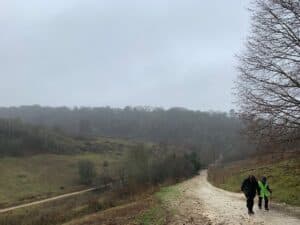

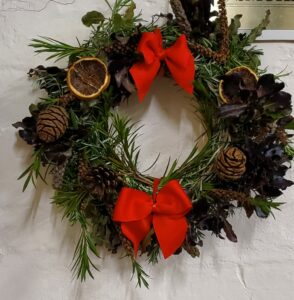 I joined a bunch of like-minded people at Wonersh Memorial Hall on a bright Saturday afternoon in the knowledge that this event would get me into the festive spirit.
I joined a bunch of like-minded people at Wonersh Memorial Hall on a bright Saturday afternoon in the knowledge that this event would get me into the festive spirit.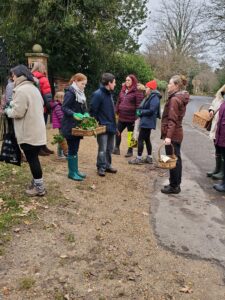
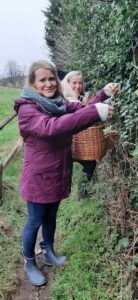

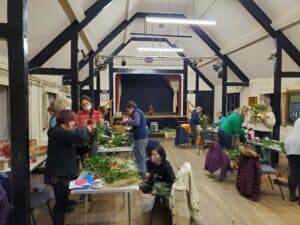
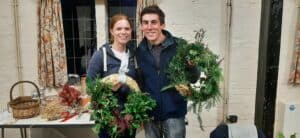

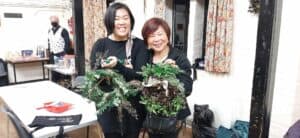

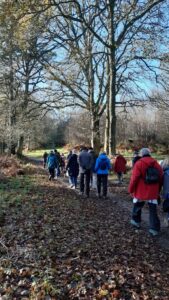 Society members enjoyed the annual visit to Belmont School and pre-Christmas walk on Saturday 4th December. Belmont is housed in a magnificent Arts and Crafts house designed by architect George T Redmayne in 1877, for Edwin Waterhouse one of the founders of the firm Price Waterhouse Co, in London. The house contains an original William Morris (1834 –1896) tapestry and William De Morgan (1839-1917) tiles. (They are two of the most famous designers of from the Arts and Crafts Movement).
Society members enjoyed the annual visit to Belmont School and pre-Christmas walk on Saturday 4th December. Belmont is housed in a magnificent Arts and Crafts house designed by architect George T Redmayne in 1877, for Edwin Waterhouse one of the founders of the firm Price Waterhouse Co, in London. The house contains an original William Morris (1834 –1896) tapestry and William De Morgan (1839-1917) tiles. (They are two of the most famous designers of from the Arts and Crafts Movement).
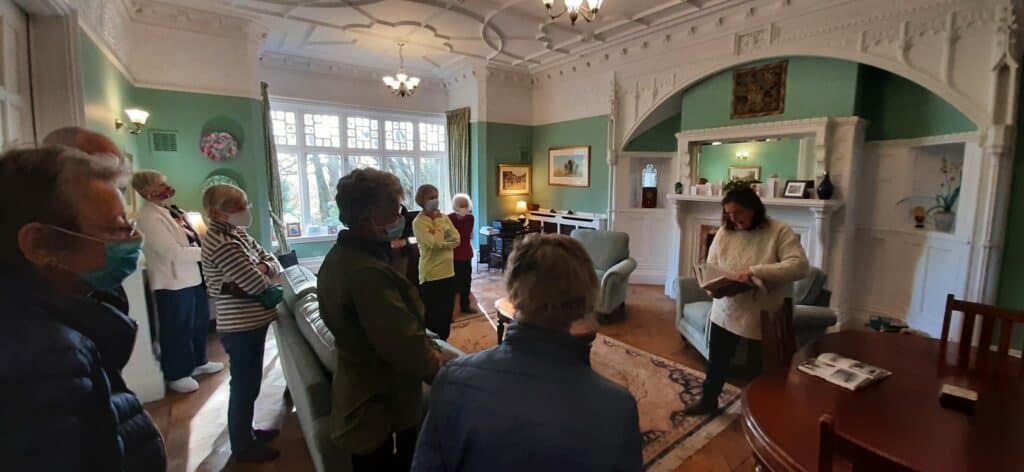
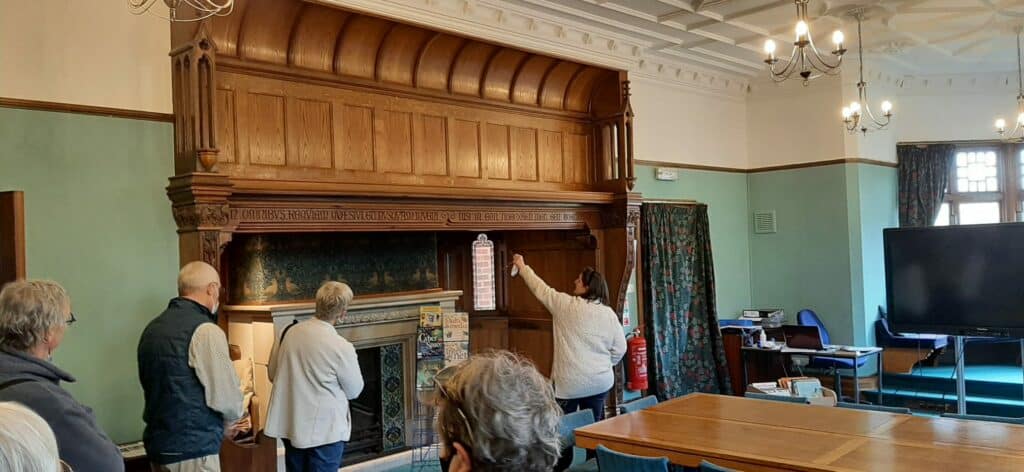
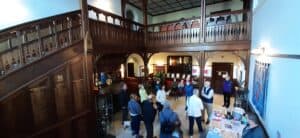


 The flowers of species such as Hawthorn and Blackthorn support a range of invertebrates, which in turn are fed on by bats and birds. However, as well as providing food, hedgerows act as important wildlife corridors, helping wildlife to travel safely across the landscape. This is particularly important for genetic diversity, preventing isolation and inbreeding of small populations, which subsequently become susceptible to disease.
The flowers of species such as Hawthorn and Blackthorn support a range of invertebrates, which in turn are fed on by bats and birds. However, as well as providing food, hedgerows act as important wildlife corridors, helping wildlife to travel safely across the landscape. This is particularly important for genetic diversity, preventing isolation and inbreeding of small populations, which subsequently become susceptible to disease.  Therefore, by allowing wildlife to travel safely across unsuitable areas, hedgerows facilitate dynamic populations of species and increase connectivity between good quality habitats in the landscape.
Therefore, by allowing wildlife to travel safely across unsuitable areas, hedgerows facilitate dynamic populations of species and increase connectivity between good quality habitats in the landscape.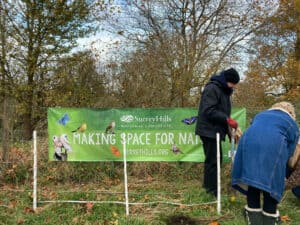
 We planted a native mix of six tree species including Hawthorn, Blackthorn, Field Maple, Hazel, Dog Rose and Spindle. This will help to provide a range of food sources for wildlife and will create a nice thick hedge for species to shelter in. It was great to see all our Champions getting involved in the tree planting and there was a wonderful feeling of community spirit as everyone worked in small teams to dig the holes, plant the trees and add the rabbit protection.
We planted a native mix of six tree species including Hawthorn, Blackthorn, Field Maple, Hazel, Dog Rose and Spindle. This will help to provide a range of food sources for wildlife and will create a nice thick hedge for species to shelter in. It was great to see all our Champions getting involved in the tree planting and there was a wonderful feeling of community spirit as everyone worked in small teams to dig the holes, plant the trees and add the rabbit protection.

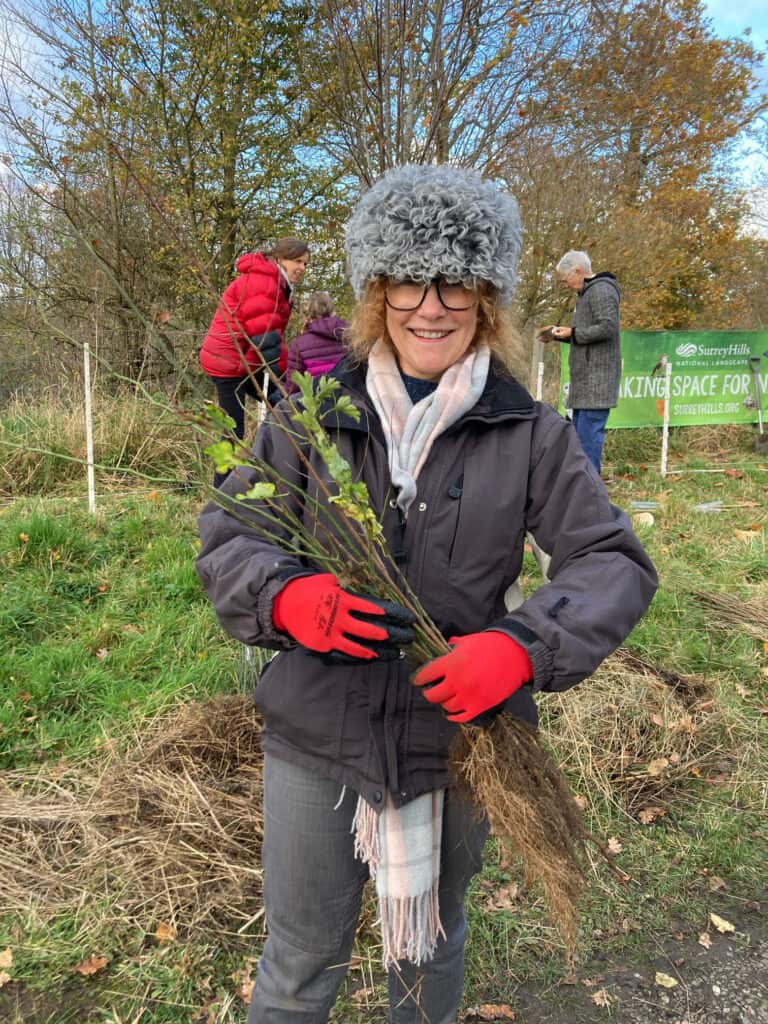

 Our regular First Sunday of the Month walk for November explored Farnham Heath and the edges of Bourne Wood.
Our regular First Sunday of the Month walk for November explored Farnham Heath and the edges of Bourne Wood.